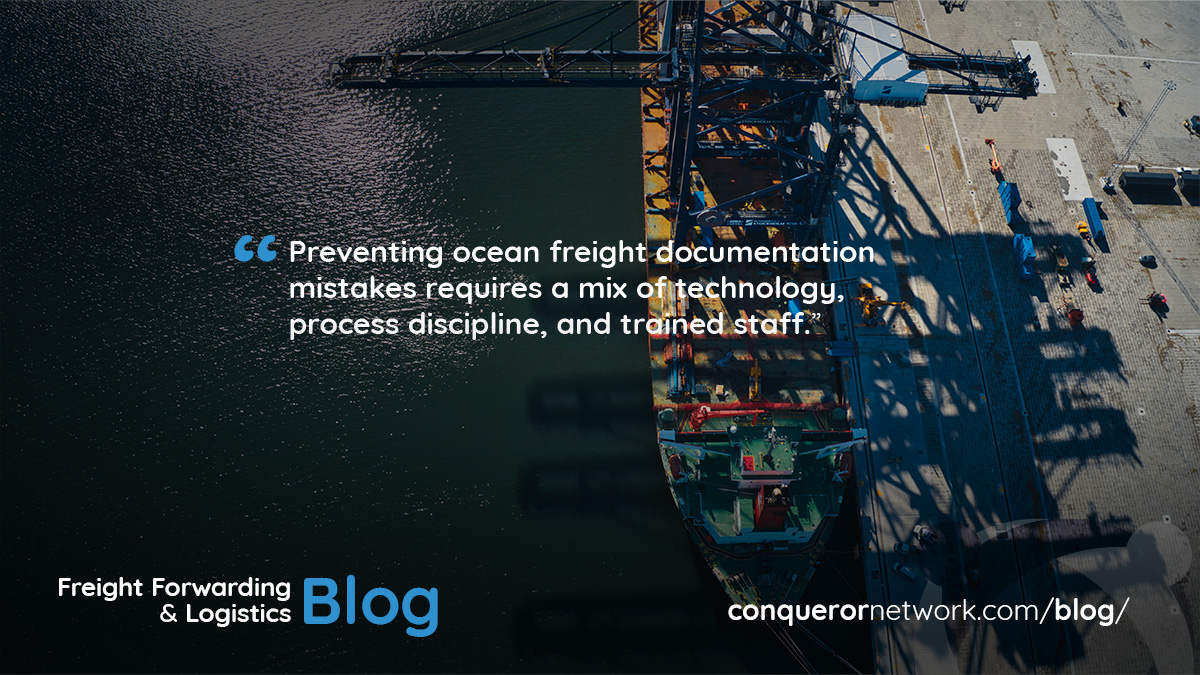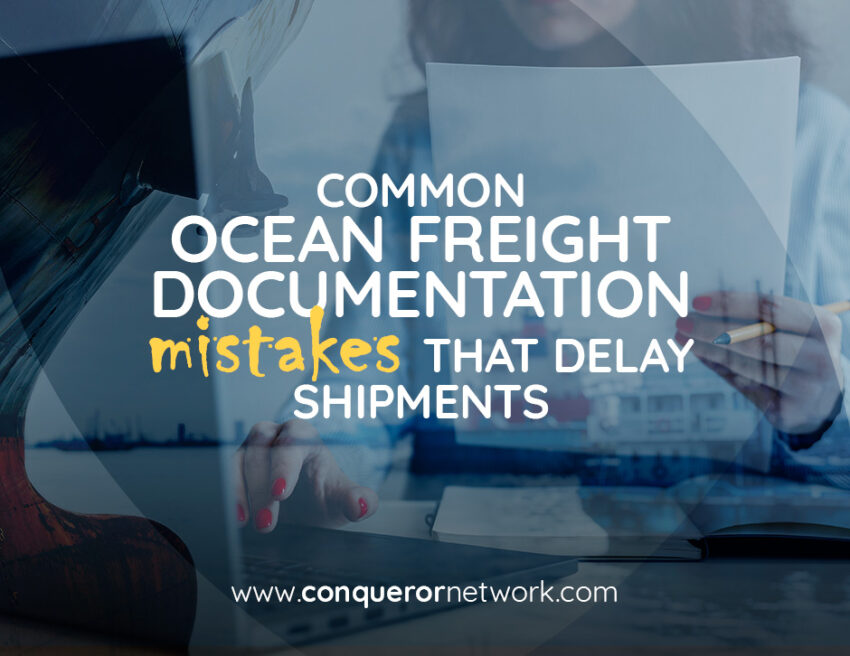For freight forwarders, efficiency and reliability are everything. Clients count on you to move cargo across oceans with precision, and in this business, a simple clerical error can have costly ripple effects. While delays in ocean freight shipments can arise from weather, port congestion, or vessel issues, more often than not, the root cause lies in something far less dramatic: documentation errors.
Ocean freight documentation mistakes are among the most common and preventable reasons for delayed shipments. These errors can hold up containers at ports, lead to hefty demurrage fees, and create headaches that damage your client relationships and credibility. For freight forwarders navigating the complex world of international trade, understanding how to avoid these pitfalls is crucial.
In this blog, we’ll explore the most frequent shipping document errors, how they impact your operations, and what steps you can take to eliminate them. If you’re in the business of moving cargo across borders, this is one area where small improvements can yield major results.
Why Documentation is So Critical in Ocean Freight
In international logistics, paperwork is more than just red tape—it’s the backbone of the entire operation. Shipping documents like the Bill of Lading, Commercial Invoice, Packing List, and Certificate of Origin serve as the legal and procedural lifeline for cargo as it moves across jurisdictions. They’re used by customs officials, port authorities, shipping lines, and consignees to verify, process, and release freight.
Missing, inaccurate, or inconsistent documents can cause major disruptions. Customs authorities might place your shipment on hold, shipping lines may refuse to release containers, and in worst-case scenarios, cargo could even be returned or destroyed. All of this translates into missed delivery windows, strained relationships, and unexpected costs.

The Cost of Ocean Freight Documentation Mistakes
When shipping documents contain errors or omissions, the costs can be substantial. A container left sitting at the port due to incomplete paperwork racks up demurrage or detention charges by the day. If the wrong HS code is declared, your client might face penalties or customs rejections. Mismatched information between the commercial invoice and the Bill of Lading can trigger manual inspections, causing additional delays.
Moreover, these kinds of mistakes erode trust. In a competitive market, a freight forwarder who repeatedly causes shipping delays due to document issues risks losing long-term clients. Ensuring accurate and complete documentation is not just good practice—it’s a business imperative.
The Most Common Ocean Freight Documentation Mistakes
So what are the frequent offenders when it comes to delayed shipments? One of the top issues is incorrect or incomplete Bills of Lading. This document is essential for both ownership and transportation purposes, and even minor discrepancies—like wrong consignee names or misdeclared cargo details—can prevent cargo from being released.
Another common error is using incorrect HS codes. This is more than a classification issue; it’s a customs compliance problem. When HS codes don’t match the goods described, shipments are flagged for review, and in some cases, customs duties are miscalculated—leading to either overpayment or fines.
Typos in the commercial invoice or mismatched data between documents are also widespread problems. For example, if the invoice lists the cargo weight differently than the packing list, or if the description of goods differs across paperwork, customs officials are likely to intervene.
Freight forwarders also frequently run into issues when documents are submitted too late. Many ports and customs agencies have strict timelines for receiving documentation prior to vessel arrival. Late submissions can stall customs clearance and lead to cargo storage at port, accumulating additional charges.
How Freight Forwarders Can Prevent Shipping Document Errors
Preventing ocean freight documentation mistakes requires a mix of technology, process discipline, and trained staff. Start by establishing a standardized documentation workflow within your team. This should include quality checks at every stage—preparation, verification, and submission. It may seem tedious, but it’s significantly less costly than dealing with a delayed container.
Digital tools can be game-changers here. Freight management systems (FMS) and supply chain platforms offer built-in templates, autofill options, and document validation features that reduce human error. Using these systems can also help align information across documents, minimizing mismatches that could otherwise flag your shipment for inspection.
If your team handles a high volume of cargo, consider implementing a document audit step—where a second team member cross-verifies all key fields before submission. Train your staff to understand the importance of accuracy in entries like HS codes, consignee details, and cargo descriptions.
Having a strong relationship with customs brokers and port authorities is also valuable. They can offer guidance on evolving documentation requirements and help resolve minor issues before they become major problems.
Managing Ocean Freight Documentation Mistakes in Real Time
Despite your best efforts, mistakes will occasionally slip through. When that happens, speed of resolution is key. Being proactive in communication with customs officials, shipping lines, and clients can sometimes minimize the fallout. If your documentation needs to be corrected post-submission, make sure you’re aware of the proper amendment procedures and deadlines.
In the event of a delay, it’s essential to keep clients informed with transparency. Explaining the issue, your plan of action, and estimated timelines can go a long way in preserving trust. For freight forwarders, professionalism during setbacks is just as important as smooth delivery during successful shipments.
Why Mastering Documentation Is a Competitive Advantage
In the highly competitive freight forwarding industry, avoiding ocean freight documentation mistakes can be a powerful differentiator. Clients want more than just movement; they want assurance. By delivering error-free, on-time documentation, you not only avoid costly mistakes but also position your company as a reliable, detail-oriented logistics partner.
Moreover, in global supply chains that are growing increasingly digitized and automated, the companies that adapt to smarter documentation processes will stand out. Fewer delays, less demurrage, and more satisfied customers mean greater profitability and stronger long-term growth.
Conclusion: Accuracy Is Non-Negotiable
The paperwork behind every ocean freight shipment might not be glamorous, but it’s mission-critical. As a freight forwarder, mastering this aspect of your operations can significantly reduce delays, protect your margins, and enhance your reputation.
If you’ve experienced the pain of cargo held at port due to paperwork issues—or you simply want to improve your service reliability—it’s time to tighten your documentation process. In an industry where every hour counts, avoiding ocean freight documentation mistakes might just be your most effective competitive strategy.


